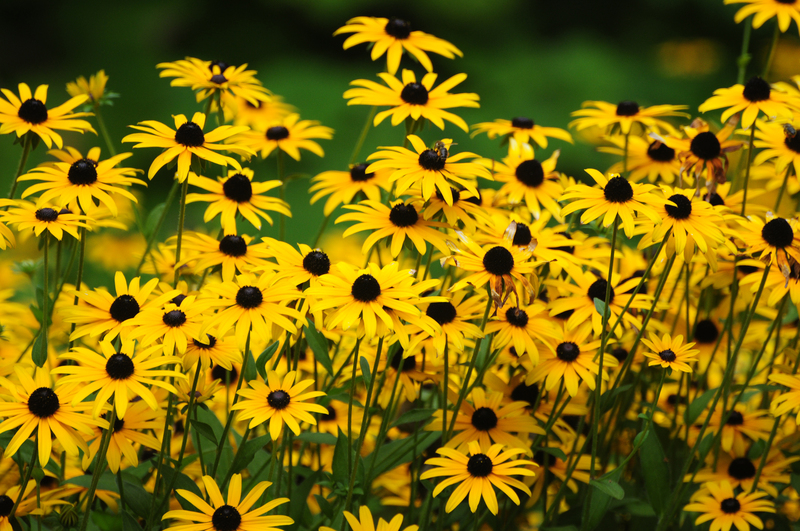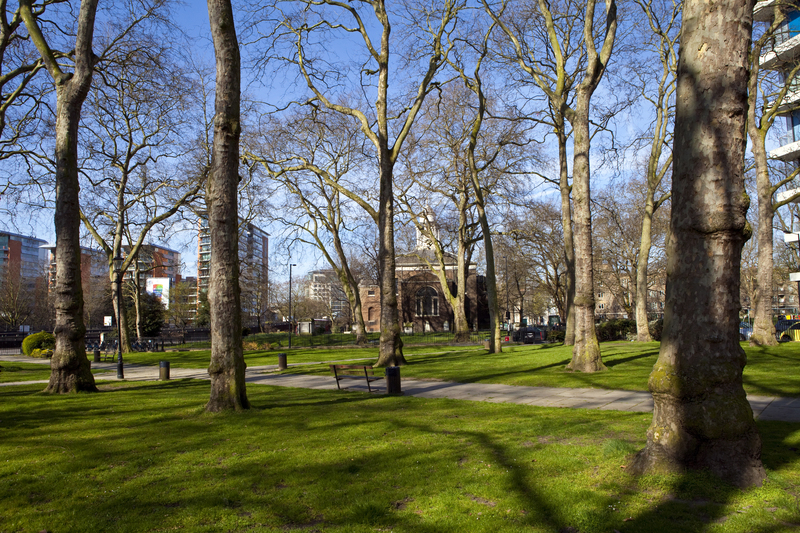Planting the Seeds for a Cooler Planet
Posted on 14/08/2025
Planting the Seeds for a Cooler Planet: A Comprehensive Guide to Restoring Earth's Climate
The urgency to counter climate change has never been greater. Amidst innovative solutions, planting the seeds for a cooler planet stands out as an effective, natural, and sustainable approach to reversing global warming. But what does this strategy entail? How can everyday individuals and communities participate? This comprehensive article unpacks the importance, strategies, and benefits of sowing green solutions for a cooler Earth.

Why Planting the Seeds for a Cooler Planet Matters
Our planet is warming at an unprecedented rate, with devastating consequences: rising sea levels, extreme weather events, and loss of biodiversity. Human activities, particularly the burning of fossil fuels and large-scale deforestation, are major contributors to the increase in greenhouse gas emissions.
So, how does planting seeds help in cooling our planet? The simple act of planting trees and promoting green landscapes can have enormous climate benefits. Plants act as Earth's lungs, absorbing carbon dioxide (CO2) from the atmosphere through a process known as photosynthesis. By planting seeds, we initiate a transformative journey: nurturing saplings into mature trees, restoring degraded lands, and reshaping urban environments into climate-resilient green spaces.
- Carbon Sequestration: Plants capture and store atmospheric CO2, reducing greenhouse gases and helping balance the global carbon cycle.
- Temperature Regulation: Urban trees and green roofs can cool cities by providing shade and increasing humidity, reducing the notorious "urban heat island" effect.
- Biodiversity Enhancement: Planting native seeds fosters healthier, more resilient ecosystems that support wildlife and pollinators.
- Soil Restoration: Vegetation prevents soil erosion, increases fertility, and stabilizes local water cycles.
Benefits Beyond Carbon Reduction
While planting for a cooler planet is often associated with climate mitigation, its advantages extend far beyond air quality and temperature control:
- Improved Mental Health: Access to green spaces and exposure to nature can reduce stress, anxiety, and depression.
- Boosted Local Economies: Agroforestry and reforestation efforts create jobs in rural and urban communities.
- Food Security: Planting fruit, nut, and vegetable-bearing species supports local food systems.
- Water Management: Healthy plant cover helps regulate water cycles, reduce flooding, and filter water pollutants.
Strategies for Sowing the Seeds of a Cooler Planet
To effectively combat global warming, planting seeds for a cooler planet must be strategic, science-based, and inclusive. Here's how you can contribute to a greener, more resilient world:
Reforestation and Afforestation
- Reforestation: Replanting trees in areas that have been deforested revives ecosystems and improves carbon capture.
- Afforestation: Introducing forests to regions where they haven't existed previously can sequester additional carbon and create new wildlife corridors.
Success Story: China's Loess Plateau is a prime example of how large-scale reforestation can reverse centuries of degradation, restore productivity, and cool entire regions.
Urban Greening
- Encourage community gardening initiatives, such as rooftop gardens, vertical green walls, and tree-lined streets.
- Push for increased public investment in parks and recreational spaces.
- Promote the planting of native and drought-resistant species adapted to local climates.
Agroforestry and Permaculture
Blending trees with agricultural land (agroforestry) enhances biodiversity, protects crops, provides livestock with shade, and increases soil fertility. Permaculture prioritizes holistic, sustainable practices to design productive, self-sustaining landscapes.
- Windbreaks: Planting trees strategically around fields reduces wind erosion and water loss.
- Food Forests: Multi-layered plantings that mimic natural forests and provide diverse harvests.
Restoring Degraded Ecosystems
Targeting overgrazed pastures, eroded hillsides, and depleted wetlands with locally adapted seeds jumpstarts natural regeneration. Assisted natural regeneration (ANR) is a low-cost approach that protects naturally sprouting seedlings and encourages their growth.
The Science Behind Planting for a Cooler Planet
How Plants Trap Carbon
The process is elegant yet powerful: plants utilize sunlight to convert atmospheric carbon dioxide into sugars, storing carbon in their roots, stems, leaves, and eventually soil. Forests and grasslands act as long-term carbon sinks, and even small plots of vegetation make a measurable impact over time.
- On average, one mature tree absorbs approximately 22 kg (48 lbs) of CO2 annually.
- Soil organic carbon accounts for a majority of a forest's carbon storage, making healthy soil crucial.
Urban Heat Islands: Cooling Cities with Greenery
Cities worldwide are grappling with higher temperatures. Concrete and asphalt absorb and trap heat, making urban areas several degrees warmer than nearby rural spaces. Urban planting initiatives--from street trees to rooftop greenery--can reduce city temperatures by up to 5?C (9?F), lowering air-conditioning demands and improving air quality.
Challenges and Solutions in Greening the Planet
While planting trees and other vegetation is a valuable tool, it is not a silver bullet. Effective climate solutions require careful planning, maintenance, and long-term community involvement.
Challenges
- Incorrect Species Selection: Non-native or invasive species can disrupt local ecosystems.
- Poor Survival Rates: Without proper aftercare--watering, protection, and weeding--many seedlings fail to reach maturity.
- Land Use Conflicts: Competing interests, such as agriculture vs. conservation, can hinder large-scale efforts.
- Climate Adaptation: Plants must be resilient to changing rainfall, pests, and temperatures.
Solutions
- Choose Native and Climate-Appropriate Species: Work with ecologists to select plants that restore native biodiversity and withstand changing conditions.
- Engage Communities: School, neighborhood, and indigenous-led planting programs improve project success and foster local stewardship.
- Long-Term Commitment: Successful projects require monitoring, care, and adaptive management to ensure trees and plants survive and thrive.
- Integrate Into Broader Climate Strategies: Combine planting efforts with emission reductions, renewable energy, and sustainable agriculture for holistic impact.
Getting Involved: Planting Seeds for a Cooler Future
The global movement for a greener, cooler planet depends on broad, inclusive participation. Everyone has a role--whether you live in a city apartment, rural village, or suburban home.
Simple Steps Individuals Can Take
- Start a Local Garden: Even a balcony or front yard can be transformed into a micro-habitat for pollinators and a source of shade.
- Join Tree-Planting Campaigns: Support local NGOs or attend community tree-planting events.
- Practice Sustainable Landscaping: Avoid chemical-based fertilizers and opt for native, drought-resistant plants.
- Support Green Policies: Urge local government to invest in parks, community gardens, and urban forestry.
- Educate Others: Share your knowledge on the benefits of planting seeds for a cooler planet through workshops, social media, and conversations.
Global Projects Making a Difference
- The Great Green Wall Initiative: Africa is building a wall of trees across the Sahel to combat desertification and climate change.
- Trillion Trees Campaign: A global movement to restore a trillion trees, supported by businesses, governments, and communities.
- Urban Forests: Cities like Singapore, Medellin, and New York are expanding greenery to cool urban environments.
Innovations in Planting for a Cooler Planet
Technology Meets Ecology
From drones dropping seed balls in hard-to-reach locations to AI-driven mapping for optimal planting sites, technology is revolutionizing how we plant the seeds for a cooler planet.
- Seed Bombing: Aerial seeding allows large-scale restoration in remote areas.
- Smart Irrigation Systems: Automated watering keeps saplings healthy while conserving water.
- Citizen Science Apps: Platforms like iNaturalist and Global Forest Watch empower individuals to monitor reforestation progress and report successes.
Integrating Traditional Knowledge
Indigenous peoples are stewards of 80% of the world's biodiversity. Their time-tested practices--such as mosaic burning, companion planting, and sustainable harvest--offer blueprints for large-scale ecosystem restoration.

Conclusion: Planting the Seeds for a Cooler, Greener Tomorrow
Planting the seeds for a cooler planet is more than a metaphor; it is a practical, accessible, and hopeful avenue for addressing the climate crisis. While no single action will solve all environmental problems, re-greening our world--one seed, one sapling at a time--can bend the curve of climate change, restore lost wilderness, and build more resilient communities.
Now is the time to dig in, nurture the earth, and watch a cooler planet grow.
Frequently Asked Questions (FAQs): Planting Seeds for a Cooler Planet
-
What types of seeds are best for cooling the planet?
Native species, climate-adapted trees, shrubs, and grasses offer the highest survival rates and ecological benefits. -
How many trees would it take to significantly lower global temperatures?
While no single number provides a solution, estimates suggest planting an additional trillion trees could sequester up to 200 gigatons of carbon, substantially impacting global warming trends. -
Can urban planting really make a difference?
Yes! Even small increases in urban greenery can reduce local temperatures, improve air quality, and boost mental health for city dwellers. -
How can I get started today?
Find a local gardening group, participate in a tree-planting event, or simply plant pollinator-friendly flowers at home.
By embracing the power of seeds and green spaces, you too can help create a cooler, healthier planet for generations to come.



